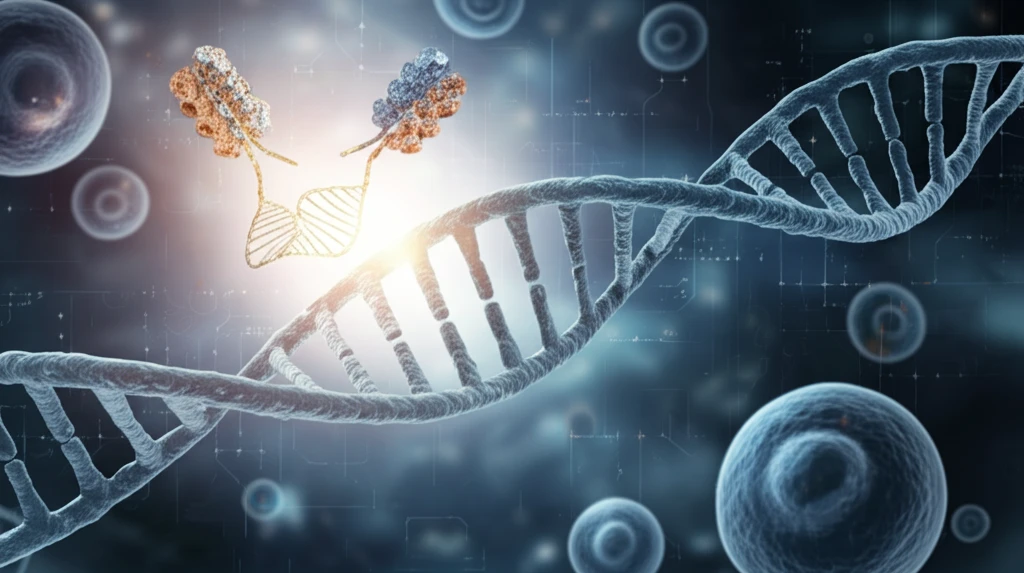
Unlocking the Secrets of DNA: How Genome Editing is Revolutionizing Chromatin Imaging
"Discover how innovative genome editing techniques are transforming our understanding of chromatin dynamics, offering unprecedented insights into gene expression and cellular processes."
For years, scientists have sought to unravel the complexities of chromatin, the intricate structure that packages DNA within our cells. Chromatin dynamics play a crucial role in regulating gene expression, influencing everything from development and differentiation to disease. Traditional methods, such as fluorescence in situ hybridization (FISH), have provided valuable snapshots of DNA distribution, but they lack the ability to capture the dynamic nature of chromatin in living cells.
The limitations of FISH, which requires cell fixation and DNA denaturation, have spurred the development of live imaging techniques. Early approaches involved fusing fluorescent proteins to various chromatin proteins, allowing researchers to visualize overall chromatin structure. However, these methods lacked the specificity needed to target individual genomic loci.
The advent of programmable DNA binding proteins, derived from genome editing technologies, has revolutionized chromatin live imaging. These innovative tools allow scientists to visualize and analyze specific DNA sequences in real-time, opening up new avenues for understanding gene regulation and cellular processes. This article explores these groundbreaking advancements and their potential impact on future research.
From Scissors to a Lamp: The Evolution of Chromatin Imaging

The journey from traditional methods to advanced genome editing-based imaging has been marked by significant milestones. Early live imaging techniques relied on fusing fluorescent proteins to general chromatin components. While providing a broad view of chromatin dynamics, these methods lacked the precision to target specific genomic regions. The development of the lacO/LacI system offered improved specificity, but it required the insertion of large DNA sequences into the genome, potentially disrupting normal chromatin structure and function.
- High Specificity: Targets individual genomic loci with precision.
- Real-Time Visualization: Captures the dynamic nature of chromatin in living cells.
- No Disruption: Avoids the insertion of large DNA sequences, preserving normal chromatin structure.
- Versatility: Adaptable for multicolor imaging and signal amplification.
The Future of Chromatin Imaging
Chromatin live imaging with genome editing techniques is poised to revolutionize our understanding of gene regulation and cellular processes. By visualizing the dynamic interactions between DNA sequences and regulatory proteins, researchers can gain insights into the mechanisms underlying development, differentiation, and disease. In the near future, multicolor imaging with multiple guide RNAs will enable the simultaneous visualization of multiple specific chromosomes, offering a powerful alternative to traditional cytogenetic methods. These advances will undoubtedly contribute to new findings in DNA recombination, chromosome rearrangement, epigenetic regulation, and nucleus organization.
